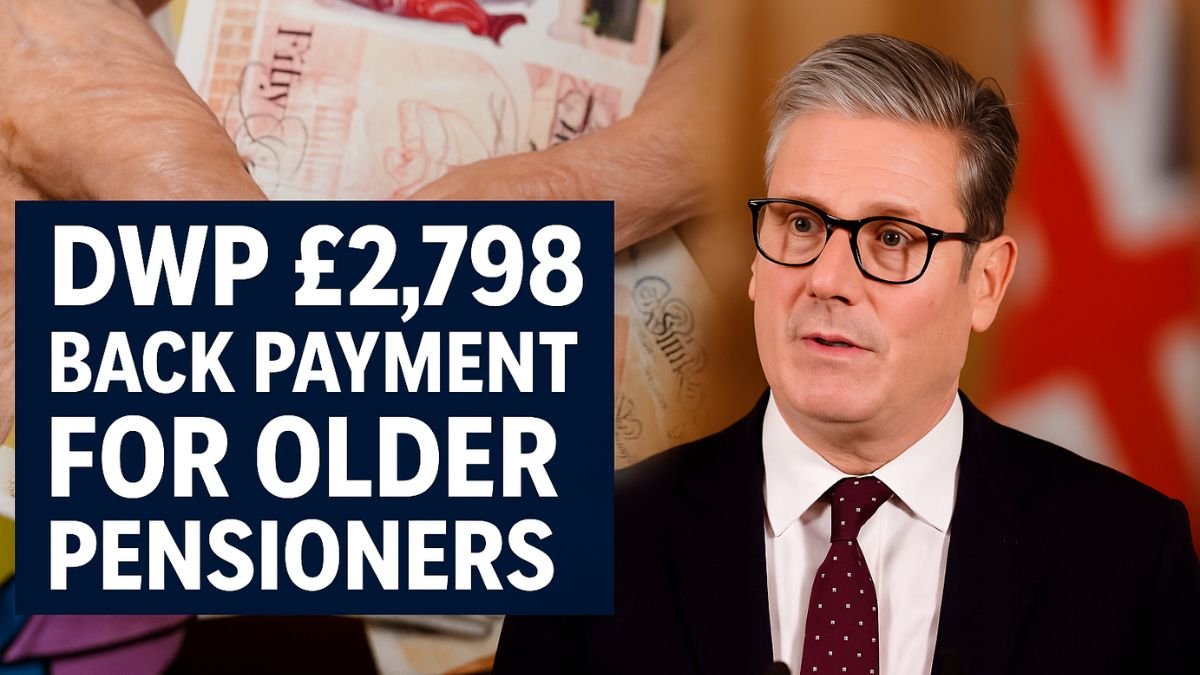Thousands of older pensioners across the UK could be missing out on up to £2,798 annually due to differences between the New State Pension and the Basic (Old) State Pension systems. According to the latest update from the Department for Work and Pensions (DWP), the variation mainly affects those who reached State Pension age before 6 April 2016.
Currently, there are 13 million people of State Pension age across Great Britain — including 1.1 million in Scotland. Of these, around 34% receive the New State Pension, while 66% remain on the Basic State Pension. The DWP’s Triple Lock ensures annual increases, but discrepancies in uprating rules have widened the gap between these two groups.
Why Are Older Pensioners Missing Out?
The ‘old’ State Pension—formally called the Basic State Pension—is a contributory system that predates the reforms of 2016. Those who qualified before April 6, 2016, continue under the old structure.
However, newer retirees receive the New State Pension, introduced to simplify the system and reflect lifetime National Insurance (NI) contributions more directly.
Despite both being governed by the Triple Lock Guarantee, an imbalance remains:
- The Basic State Pension rises according to the Triple Lock (highest of earnings, inflation, or 2.5%).
- But additional pension elements, like deferred amounts, only rise with the Consumer Price Index (CPI).
This difference, experts warn, has created a “two-tier uprating system” where older pensioners effectively see slower pension growth over time.
Triple Lock Guarantee Explained
The Triple Lock promises that the State Pension increases each year by the highest of:
- Average earnings growth (May–July period)
- Consumer Price Index (CPI) inflation (year to September)
- 2.5% minimum rise
This policy aims to protect pensioners from inflation and wage stagnation, ensuring their income maintains real-world value.
The £2,798 Pension Gap
In 2025/26, pensioners on the Full New State Pension will receive significantly higher payments compared to those on the Full Basic State Pension:
| Pension Type | Weekly Payment | Fortnightly Payment | 4-Weekly Payment | Annual Amount |
|---|---|---|---|---|
| Full New State Pension | £230.25 | £460.50 | £921 | £11,973 |
| Full Basic State Pension | £176.45 | £352.90 | £705.80 | £9,175 |
Difference: £11,973 – £9,175 = £2,798 per year
That’s the equivalent of nearly £233 per month in additional income for those on the new scheme.
Eligibility for State Pension
To qualify for the Basic State Pension or the New State Pension, you must meet certain National Insurance (NI) contribution requirements.
Basic (Old) State Pension Eligibility
- You reached State Pension age before 6 April 2016
- You made at least 30 years of NI contributions (for the full rate)
- Your payments may include Additional State Pension (SERPS or State Second Pension)
New State Pension Eligibility
- You reached State Pension age on or after 6 April 2016
- You need 35 qualifying years of NI contributions
- Partial pensions are possible for those with fewer years
You can check your State Pension forecast on the official UK Government website.
Why the £2,798 Difference Exists
The gap arises mainly because:
- The New State Pension consolidated older add-ons into one predictable payment.
- The Basic State Pension relies on additional components (like SERPS) that don’t always benefit from the Triple Lock.
- Some “protected payments” increase only by CPI, not by earnings or the 2.5% floor.
A former DWP employee noted that this effectively creates two classes of pensioners, even though both groups paid National Insurance over their lifetimes.
What the People’s Pension Advises
According to The People’s Pension, while pensioners will see increases, the State Pension alone is unlikely to fund a comfortable retirement.
“If you’ve worked for an employer or been self-employed, it’s likely that you’ve picked up additional workplace or personal pension pots along the way.
If you’re able to, putting a bit more into these pensions can give your savings a boost (and you’ll earn tax relief from the government at the same time).”
This highlights the need for private pension planning, even for those receiving full DWP entitlements.
State Pension 2025/26 Breakdown
Here’s how payments look under the new rate structure:
| Payment Type | Frequency | Amount (Full New Pension) |
|---|---|---|
| Weekly | £230.25 | £176.45 |
| Fortnightly | £460.50 | £352.90 |
| 4-Weekly | £921 | £705.80 |
| Annual | £11,973 | £9,175 |
Key Takeaways
- Pensioners on the old scheme are losing around £2,798 annually compared to those on the new system.
- The Triple Lock ensures annual increases, but not all elements rise equally.
- The DWP continues to review potential reforms, but for now, the two-tier structure remains.
- Pensioners are encouraged to check their NI record and explore private or workplace pension options.
Conclusion
The DWP £2,798 back payment difference highlights how the structure of the UK pension system continues to evolve — yet still leaves some retirees at a disadvantage. While the Triple Lock ensures protection against inflation, pensioners on the Basic State Pension earn substantially less.
For a more secure retirement, experts recommend exploring private savings and workplace pension options — ensuring that all eligible individuals receive the support they deserve.
FAQs – DWP £2,798 Pension Difference
1. Who qualifies for the £2,798 back payment?
No official one-off back payment has been announced. The figure represents the annual difference between the old and new state pension systems.
2. Can old pensioners switch to the new State Pension?
Unfortunately, no. If you reached pension age before April 6, 2016, you remain under the old rules.
3. How is the Triple Lock affecting payments in 2025?
Both old and new pensions will rise under the Triple Lock, but additional elements like deferred pensions only rise by CPI.
4. How can I check how much pension I’ll get?
Visit the official UK Government Pension Service and sign in with your Government Gateway account.


